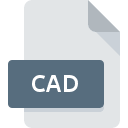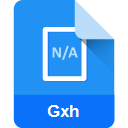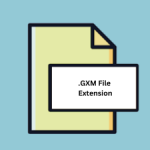.CAD File Extension

BobCAD-CAM File
| Developer | BobCAD-CAM |
| Popularity | |
| Category | CAD Files |
| Format | .CAD |
| Cross Platform | Update Soon |
What is an CAD file?
The .CAD file extension is a proprietary format associated with BobCAD-CAM software, a prominent player in the computer-aided design (CAD) and computer-aided manufacturing (CAM) industries.
BobCAD-CAM files are utilized to create, manage, and simulate various manufacturing processes, including milling, turning, routing, and more.
The .CAD extension denotes files that contain detailed design information, tool paths, and machine-specific instructions critical for CNC (Computer Numerical Control) operations.
More Information.
Initially, the .CAD file format was developed to address the limitations of existing file formats in the mid-1980s. As CNC machining technology advanced, the need for a robust and comprehensive file format became evident.
BobCAD-CAM introduced the .CAD file to provide an all-encompassing solution that could handle intricate designs and the detailed instructions required for modern machining processes.
Over the years, the .CAD file has evolved, incorporating advancements in both CAD and CAM technologies, thus maintaining its relevance in the manufacturing industry.
Origin Of This File.
The .CAD file format is intrinsically linked to BobCAD-CAM, a software company founded in 1985. BobCAD-CAM has developed a suite of tools designed to streamline the CAD/CAM workflow, facilitating the transition from digital designs to physical products.
The .CAD file format emerged as a proprietary solution tailored to the specific needs of BobCAD-CAM users, enabling the storage of complex design and manufacturing data in a single file.
File Structure Technical Specification.
The .CAD file format is designed to encapsulate a wide range of data pertinent to both design and manufacturing processes. Key elements typically found in a .CAD file include:
- Geometric Data: Detailed descriptions of 2D and 3D shapes, including lines, arcs, circles, and splines.
- Tool Paths: Information on the paths that cutting tools will follow during the machining process.
- Machine Instructions: Specific commands tailored to different types of CNC machines.
- Simulation Data: Information used to simulate the machining process, allowing for verification and optimization before actual production.
- Metadata: Additional data such as project names, dates, version history, and author information.
The .CAD file is structured in a way that prioritizes efficiency and compatibility within the BobCAD-CAM ecosystem, ensuring seamless interaction between design and manufacturing modules.
How to Convert the File?
Converting .CAD files to other formats typically requires the use of BobCAD-CAM software. Here are the general steps:
- Open the .CAD file in BobCAD-CAM.
- Export the file: Navigate to the ‘File’ menu and select ‘Export’.
- Choose the desired format: Common formats include DXF, DWG (for CAD data), or G-code (for CNC machine instructions).
- Adjust settings: Depending on the chosen format, you may need to configure specific export settings.
- Save the file in the new format.
Additionally, third-party conversion tools or plugins might be available, but they may not fully support all features of the .CAD format.
Advantages And Disadvantages.
Advantages:
- Integration: The .CAD file format allows for seamless integration within the BobCAD-CAM software, facilitating a streamlined workflow from design to production.
- Comprehensiveness: Encapsulating both design and manufacturing data within a single file simplifies data management and reduces the risk of errors.
- Optimization: The format supports advanced simulation capabilities, enabling users to optimize tool paths and machining processes before actual production.
- Precision: Detailed geometric and tool path data ensures high precision in CNC machining, which is critical for producing high-quality components.
Disadvantages:
- Proprietary Nature: Being a proprietary format, .CAD files are primarily supported by BobCAD-CAM software, limiting interoperability with other CAD/CAM systems.
- Learning Curve: Users unfamiliar with BobCAD-CAM software may face a steep learning curve when working with .CAD files.
- Software Dependency: Dependence on BobCAD-CAM software for creating, editing, and viewing .CAD files can be a limitation if alternative solutions are required.
How to Open CAD?
Open In Windows
- BobCAD-CAM Software: The primary method for opening .CAD files on Windows is using BobCAD-CAM. Install the software, then use the ‘Open’ function to load the file.
- Compatibility Mode: If you encounter issues, running the software in compatibility mode for an older version of Windows may resolve them.
Open In Linux
- Wine: A compatibility layer that allows running Windows applications on Linux. Note that not all features of BobCAD-CAM may work perfectly.
- Virtual Machines: VirtualBox or other VM software can run Windows within Linux, enabling the use of BobCAD-CAM.
Open In MAC
- Virtual Machines (VMs): Software like Parallels Desktop or VMware Fusion allows you to run Windows within macOS, enabling you to use BobCAD-CAM.
- Boot Camp: Apple’s Boot Camp allows you to install Windows on a separate partition of your Mac, providing full access to BobCAD-CAM.













